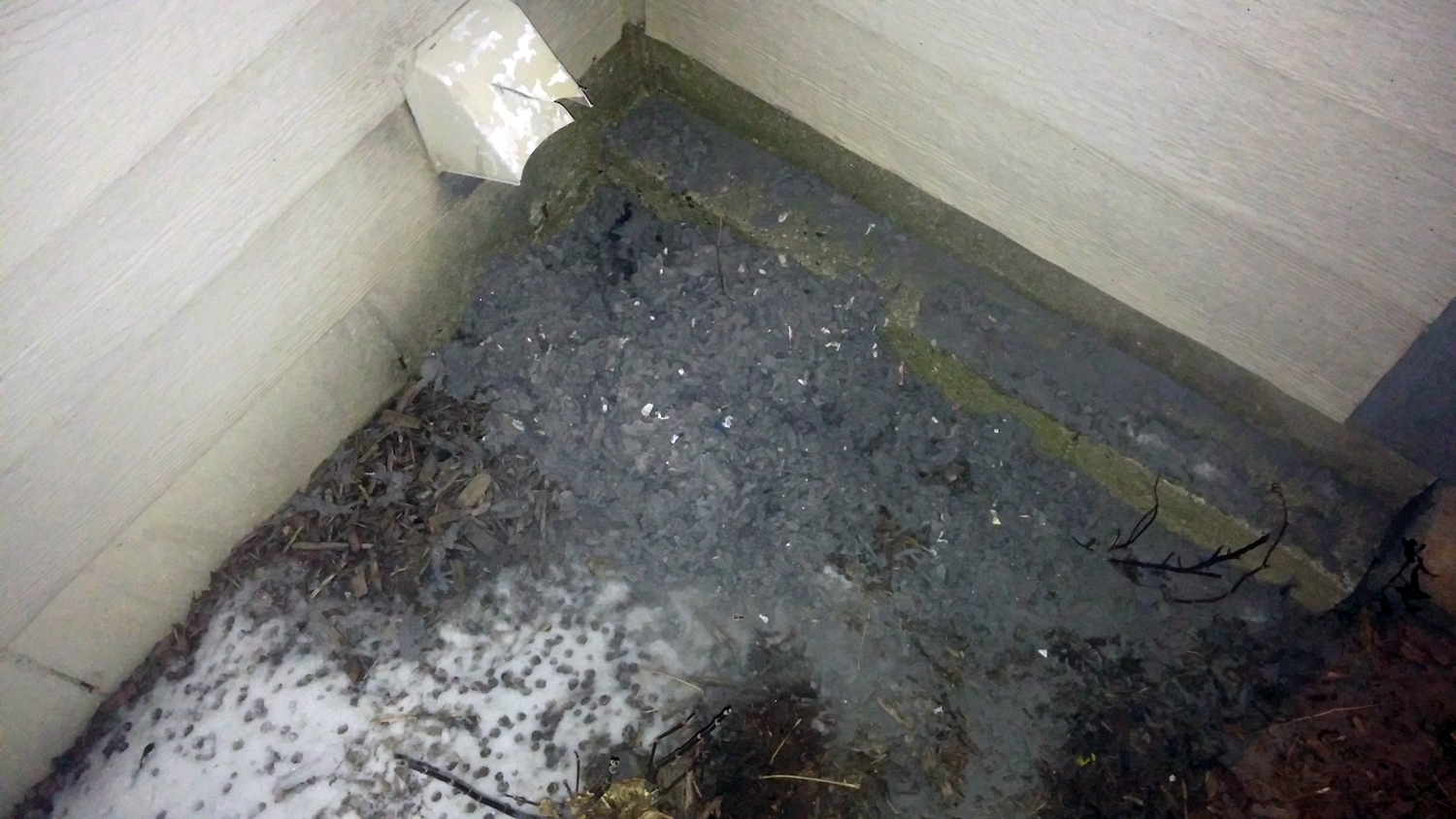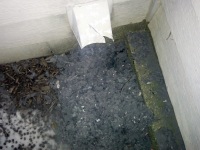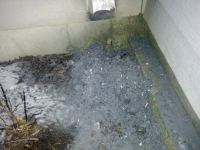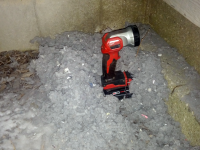Ask anyone who, at one time or another, had to depend on a clothesline to dry their clothes—having a clothes dryer in your home is a wonderful convenience. But whether your clothes dryer is gas or electric, there are safety issues that everyone should be aware of to ensure the health and safety of you and your family.
For demonstration purposes, here are some photos from a recent job we had to illustrate clothes dryer safety.
Connecting Your Dryer to the Dryer Vent
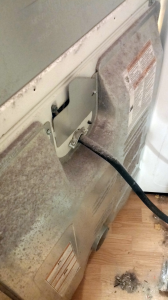 In this first photo, you can see dust behind the dryer and on the rear wall of the dryer. This indicates a leak in the dryer’s flex hose. Homeowners should make sure the connections between the clothes dryer and the vent (in this case a flex hose) are tight without any air leaks. This is important not only to keep the dryer lint from escaping and making a mess behind your dryer, but it can significantly add to the amount of dust in your home. If your dryer is a gas dryer, harmful gas could be released into the air in your home, creating a health hazard for your entire family.
In this first photo, you can see dust behind the dryer and on the rear wall of the dryer. This indicates a leak in the dryer’s flex hose. Homeowners should make sure the connections between the clothes dryer and the vent (in this case a flex hose) are tight without any air leaks. This is important not only to keep the dryer lint from escaping and making a mess behind your dryer, but it can significantly add to the amount of dust in your home. If your dryer is a gas dryer, harmful gas could be released into the air in your home, creating a health hazard for your entire family.
Proper Length of Your Dryer Vent Hose
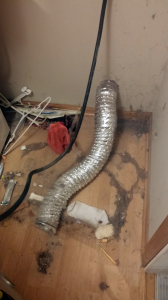 Another safety issue in venting your clothes dryer is the length of the hosing that attaches from the back of the drier to the duct system that exits the house. When the hosing is too long it creates a problem after you push your drier back up against the wall. Home owners should make sure the hosing is not kinked or restricting air flow in any way.
Another safety issue in venting your clothes dryer is the length of the hosing that attaches from the back of the drier to the duct system that exits the house. When the hosing is too long it creates a problem after you push your drier back up against the wall. Home owners should make sure the hosing is not kinked or restricting air flow in any way.
Limiting the dryer vent hose to the proper length will help to eliminate any kinking in the hose.
Length of Your Dryer Vent to the Exterior
This particular drier duct was 20’ in length. As you can see the amount of lint that collects in the dryer duct is substantial. This customer was experiencing longer dry times and assumed it was time for a new dryer but in reality she just needed her dryer duct cleaned.
Many people don’t realize there are limits to the length of the duct work that your dryer can properly and safely vent to the exterior. The manufacturer of your clothes dryer will specify what the maximum length should be.
No Way to Avoid Dryer Lint, Cleaning is Important
When you put wet clothes in the clothes dryer the moisture from the clothing is pushed through the dryer duct causing the interior walls of the duct to become wet and wet ducts collect dryer lint. In winter time it is especially important to have clean drier ducts because the moisture that is coming from the wet clothes can build up on the dryer duct and on the exterior opening.
On the exterior opening of your dryer vent, there are generally flaps that open and close when the dryer is turned on and off. When moisture builds up on that flap in the cold temperatures it tends to freeze shut. When that happens, the next time you run a load of clothing through the dryer it takes a while for the heat to build up enough to open that flap. Until it does, you are dumping wet dryer lint inside the dryer duct. As you continue to run your dryer the problem gets worse and eventually will freeze shut permanently until the temperatures outside warm up enough to unfreeze the flap. The longer the dryer duct, the more 90 degree bends, the more lint gets trapped inside the duct. This is why customers with longer drier ducts should get theirs cleaned more often.
Here are photos of the amount of lint we cleaned out of this particular homeowner’s dryer vent. I placed my drill in the pile of lint (before we cleaned it all up) so you could see the amount of lint that was trapped.

